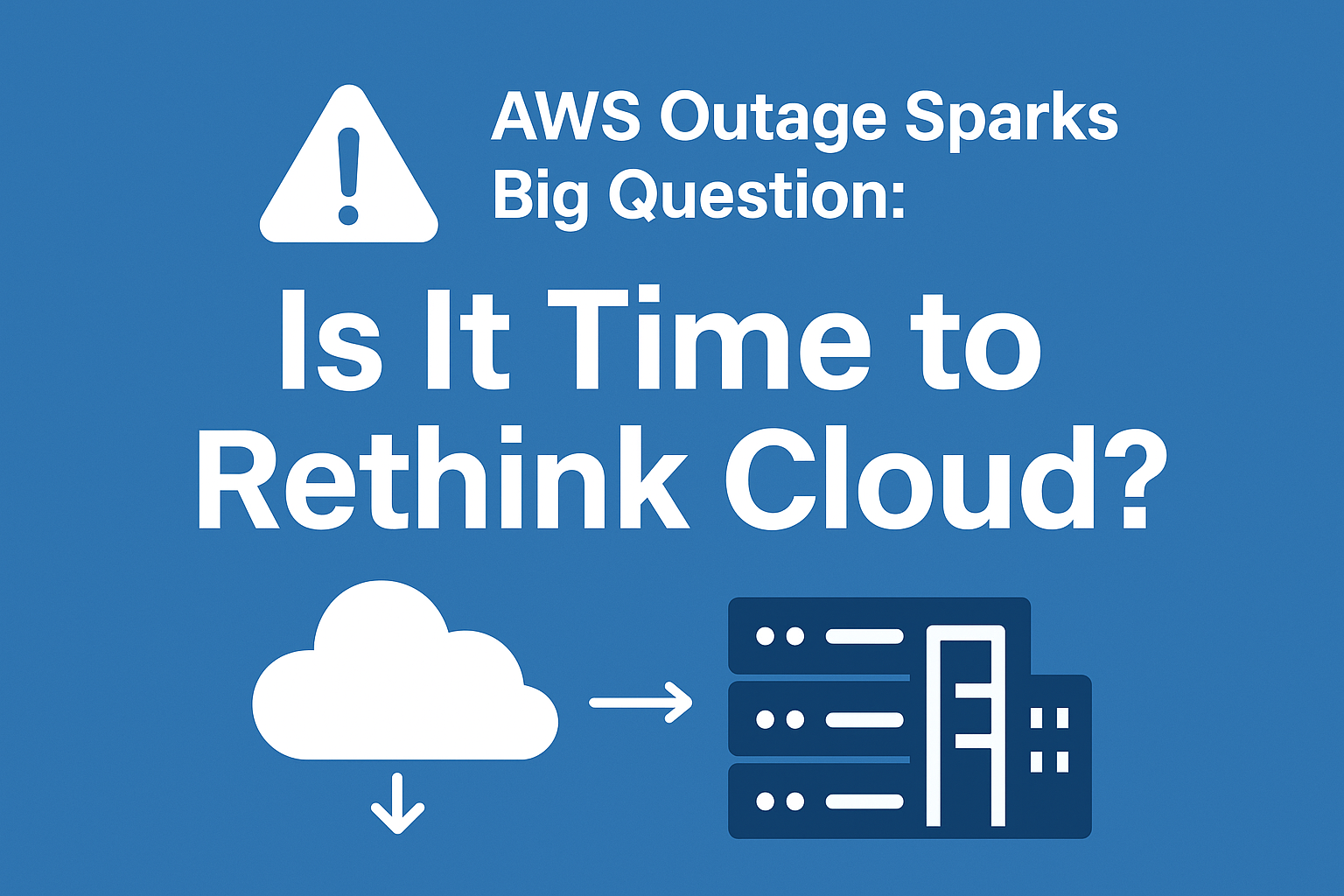Introduction
On October 20, 2025, Amazon Web Services (AWS) experienced a significant outage that disrupted numerous major platforms and services globally, including Snapchat, Roblox, Signal, Duolingo, and Amazon’s own services. Over 2,000 companies were affected, with millions of reports from users in the US, UK, and Australia. Financial services, including Lloyds, Halifax, and Bank of Scotland, as well as government services like HM Revenue and Customs, also faced disruptions. The Guardian
The incident has sparked a debate about the reliability of cloud services and whether businesses should reconsider their reliance on cloud providers like AWS. This blog post explores the implications of the AWS outage and discusses whether it’s time to shift from cloud-based infrastructure to on-premise solutions.
Understanding the AWS Outage
The AWS outage originated in the US-East-1 region in Virginia due to problems with an internal subsystem managing traffic load balancers. While Amazon ruled out malicious intent, experts criticized the growing dependence on a few cloud providers—Amazon, Microsoft, and Google—for global internet infrastructure. Advocacy groups and academics stressed the need for more diversification in cloud computing to safeguard critical services and democratic platforms. The Guardian
The affected platforms included major services such as Amazon’s main retail site, Ring doorbell company, and various third-party applications. In the UK, Lloyds Bank, Halifax, and Bank of Scotland experienced disruptions, as well as issues accessing the HM Revenue and Customs website. Reports of problems on individual apps ran into the tens of thousands for each platform. The Guardian
The Case for On-Premise Infrastructure
The AWS outage highlights the risks associated with relying on a single cloud provider for critical services. On-premise infrastructure offers several advantages that can mitigate these risks:
- Control and Customization: With on-premise solutions, businesses have full control over their hardware and software configurations, allowing for tailored solutions that meet specific needs.
- Data Security: Storing data on-site reduces the risk of external breaches and ensures compliance with data protection regulations.
- Reliability: By managing their own infrastructure, businesses can implement redundant systems and backup solutions to minimize downtime.
- Cost Predictability: On-premise solutions often involve upfront costs but can lead to long-term savings by eliminating ongoing subscription fees associated with cloud services.
Challenges of On-Premise Infrastructure
While on-premise infrastructure offers benefits, it also presents challenges:
- Initial Investment: The upfront costs for purchasing hardware and software can be significant.
- Maintenance: Ongoing maintenance, including updates and repairs, requires dedicated IT staff and resources.
- Scalability: Scaling on-premise solutions to accommodate growth can be complex and costly.
- Disaster Recovery: Implementing effective disaster recovery plans necessitates additional investment in backup systems and infrastructure.
Hybrid Solutions: A Balanced Approach
Many businesses are adopting hybrid solutions that combine the benefits of both cloud and on-premise infrastructure. This approach allows companies to maintain critical operations on-site while leveraging the cloud for scalability and flexibility.
Hybrid solutions can include:
- Private Clouds: Dedicated cloud resources hosted on-premise or in a private data center.
- Edge Computing: Processing data closer to the source to reduce latency and bandwidth usage.
- Multi-Cloud Strategies: Utilizing services from multiple cloud providers to avoid dependency on a single vendor.
Conclusion
The AWS outage serves as a reminder of the vulnerabilities associated with centralized cloud services. While cloud providers offer scalability and convenience, businesses must weigh these benefits against the potential risks. On-premise infrastructure provides greater control and security but comes with its own set of challenges. Ultimately, the decision between cloud and on-premise solutions depends on the specific needs and resources of each business.
As the digital landscape continues to evolve, businesses must remain agile and consider diverse strategies to ensure the reliability and security of their operations.


No responses yet